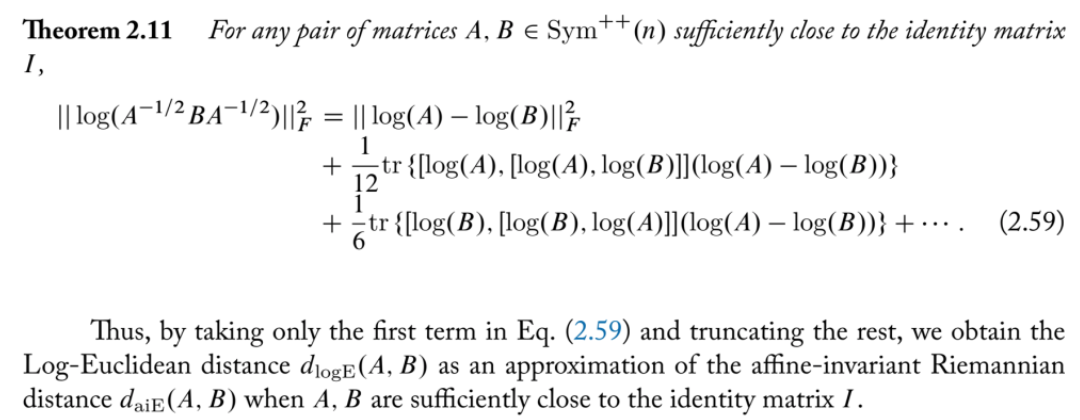It is not so simple a relationship. Linearization suggests that log-Euclidean metric should live on some sort of tangent space to the cone of SPD matrices, but both metrics live on the cone itself instead. If $X$ and $Y$ commute then $d_{LE}(X, Y)=d_{R}(X, Y)$, and, in particular, they coincide on the tangent space to $I$. The difference is that $d_{R}$ is fully invariant under the action of $GL_n$ on the cone by conjugation $X\mapsto LXL^T$, it is the quotient metric on the cone taken as the Rimannian symmetric space $GL_n/O_n$, with $ds^2 = \text{tr}\bigl((g^{-1}dg)^Tg^{-1}dg\bigr)$ metric on $GL_n$. On the other hand, $d_{LE}$ is only invariant under the action of similarity matrices (i.e. when $L$ is a scaled orthogonal transformation). One could say that $d_{LE}$ is a poor man's $d_{R}$ with various computations (like Fréchet mean) being less costly to perform, and more stable to numerical errors. It also produces positive definite Gaussian kernels, unlike $d_{R}$.
Comparisons between properties of the two metrics are made in Log-Euclidean metrics for fast and simple calculus on diffusion tensors by Arsigny et al. In particular, determinants of Fréchet means according to both are the geometric means of the determinants (which means that geodesic interpolation does not lead to "swelling" of interpolating matrices), traces of log-Euclidean Fréchet means are always larger than of invariant ones, and the former are generally more anisotropic (the ratio of the maximal and the minimal eigenvalues is larger). Moreover, the corresponding distances are not globally uniformly equivalent even in 2D, see Equivalent metrics on symmetric positive definite matrices.


